Blue Light Therapy / Photodynamic Therapy
The procedure is relatively quick, with minimal discomfort and downtime, making it a popular option for patients seeking skin rejuvenation at Dermatology Associates & Surgery Center.
Blue Light Therapy / Photodynamic Therapy Examples
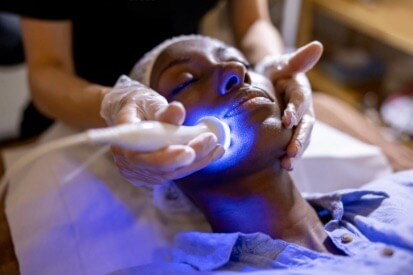
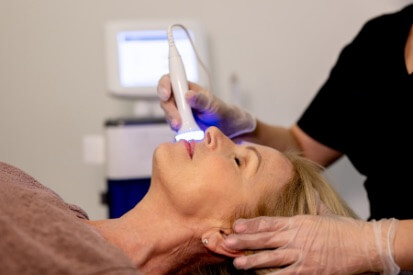


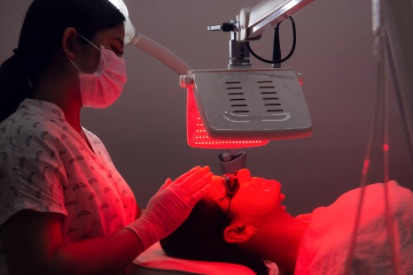
Benefits of Blue Light Therapy / Photodynamic Therapy
- Acne Reduction: Effectively targets and reduces acne breakouts.
- Skin Rejuvenation: Promotes overall skin rejuvenation and clarity.
- Minimally Invasive: Non-surgical and minimally invasive procedure.
- Precise Targeting: Targets specific areas of concern with precision.
- Quick Treatment: Typically, sessions are quick and convenient.
- Improves Skin Texture: Enhances skin texture and reduces signs of aging.
- Customizable: Can be tailored to address individual skin concerns.
- Minimal Downtime: Little to no downtime, allowing for a quick return to regular activities.
Common Side Effects of Blue Light Therapy / Photodynamic Therapy
- Temporary redness at the treatment site.
- Mild swelling, typically resolving quickly.
- Increased sensitivity to sunlight post-treatment.
- Temporary peeling or flaking of the skin.
- Mild discomfort during or after the procedure.
- Temporary itching in treated areas.
- Rare risk of Hyperpigmentation, with improper aftercare.
- Rare risk of Hypopigmentation or lightening of skin color.
- Extremely rare allergic reactions.
What to Expect at Your Blue Light Therapy / Photodynamic Therapy Appointment
Blue Light Therapy / Photodynamic Therapy Maintenance Recommendations
After undergoing Blue Light Therapy / Photodynamic Therapy, following proper maintenance recommendations is crucial for optimal results. Your dermatology provider may suggest the following:
- Sun Protection: Apply broad-spectrum sunscreen regularly, especially in the days following the procedure, to protect treated areas from UV damage.
- Gentle Cleansing: Use a mild, non-abrasive cleanser to clean the treated area without causing irritation.
- Avoid Harsh Products: Refrain from using harsh skincare products that may irritate the skin, and consult your dermatology provider before introducing new products.
- Regular Follow-ups: Schedule regular follow-up appointments with your dermatology provider to assess the healing process and address any emerging concerns.
Adhering to these maintenance recommendations ensures the best outcomes and supports the long-term effectiveness of Blue Light Therapy / Photodynamic Therapy.
Blue Light Therapy / Photodynamic Therapy Maintenance Schedule
- Following the initial treatment, a period of assessment is undertaken to evaluate the skin's response and the need for additional sessions.
- Depending on the individual's skin condition and response, a customized maintenance plan is devised by the dermatology provider.
- Maintenance sessions may vary in frequency, with some individuals requiring periodic treatments to sustain results.
- Regular consultations with the dermatology provider are advised to assess the ongoing condition of the skin and determine the necessity for further sessions.
- As skincare needs evolve, additional sessions may be recommended to address emerging concerns and maintain the efficacy of Blue Light Therapy / Photodynamic Therapy.
FAQs about Blue Light Therapy / Photodynamic Therapy
Most patients report minimal comfort, making it a well-tolerated procedure.
A series of treatments will most likely be recommend for best results. The number of sessions may vary based on your skin and cosmetic goals.
Blue Light Therapy / Photodynamic Therapy is can be performed on many areas of the body such as the face, neck, chest, and hands.
Yes! Blue light therapy can clear up acne on the face and body.
Blue Light Therapy is particularly effective for precancerous lesions on areas with significant sun exposure, such as the face, scalp, and hands.
From our QualDerm Family of Brands: IPL Therapy Demo
How DASC Can Help
Schedule a consultation where one of our providers will evaluate your skin, discuss your cosmetic goals, and create a personalized treatment plan for you.
Featured Products
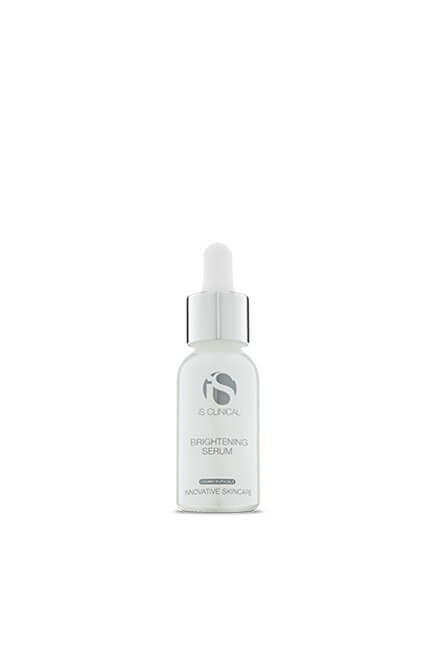
iS Clinical Brightening Serum
Brightening Serum is a powerful formula that safely reduces the appearance of uneven skin tone, while providing significant controlled exfoliation without peeling. This lightweight and easily absorbed serum is excellent for overall coverage, or as a targeted boost for problem areas. Brightening Serum is a concentrated combination of potent botanical ingredients that visibly address uneven skin tone on many levels, while providing multiple ageless benefits.
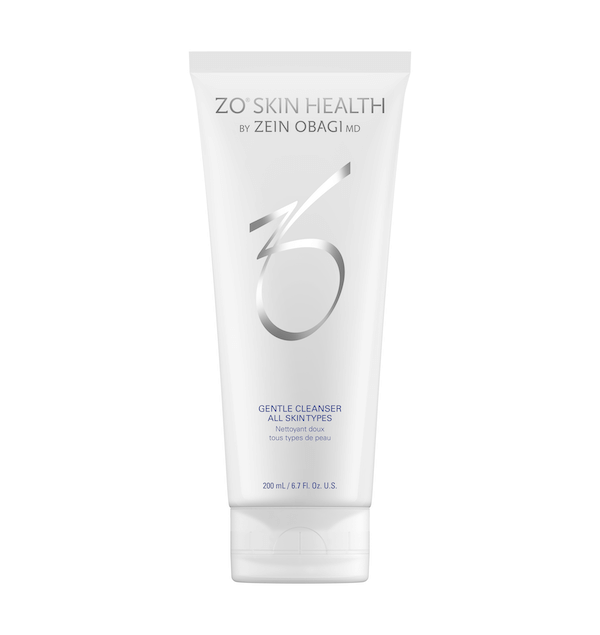
ZO® Gentle Cleanser All Skin Types
Cleanses impurities for refreshed-feeling skin. 200 mL / 6.7 Fl. OZ
